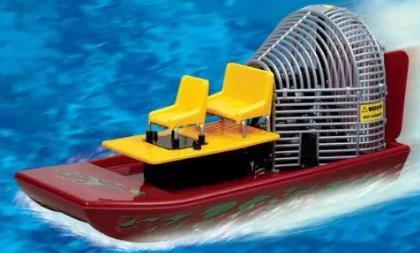displacement 和 distance的区别
Posted
tags:
篇首语:本文由小常识网(cha138.com)小编为大家整理,主要介绍了displacement 和 distance的区别相关的知识,希望对你有一定的参考价值。
这两个的定义和区别是什么。。。。学标量和矢量提到的
区别在于:是否有方向。
displacement和distance都是名词,displacement意思是“取代,位移或[船] 排水量,既有方向又有大小;distance英文单词,名词、动词,作名词时意为“距离;远方;疏远;间隔”;作动词时意为“ 疏远;把…远远甩在后面”,只有大小没有方向。

distance相关介绍:
一、短语搭配
Administrative Distance管理距离;管理位距;管辖距离 ; 办理距离。
Distance marker距离刻度 ;[雷达]距离标志;距离标示器;距离标示。
distance education远程教育 ; 遥距教育 ; 远程教学。
Hamming distance汉明距离;海明距离。
angular distance[天]角距离 ;[天]角距 ; 秀距离。
二、例句
1、Into the distance around you.
带到远方你身边。
2、You and me only one corner of the distance.
你和我只有一个转角的距离。
3、I like distance.
我喜欢距离。
参考技术A displacement和distance都是名词,前者翻译为“ 位移,(船的)排水量”,既有方向又有大小;后者翻译为“距离,路程”,只有大小没有方向,是distant的名词形式。矢量和标量,的区别在于是否有方向,对吧! 参考技术B 我不知道什么是矢量标量
但是displacement是放错了 distance是放远了(或者“距离”)
FFT - find frequency from a time history of displacement
fft - find the frequency of a signal
%% inputs: time, displacement, lift and drag coefficents
% author: guofei, kaiming ai
% output: normalised displacement vs time
clear;
clc;
%% read data
data=xlsread(‘gap0.005ur7.xlsx‘);
A1=data(800:4233,1); % time on one cycle
A2=data(800:4233,2); % displacement
A3=data(800:4233,3); % lift
A4=data(800:4233,4); % drag
% plot(A1,A2)
%% plot data
figure(1);
U=1.1686; %free stream velocity
fig_hei=0.28;
fig_wei=0.9;
lef_cor_x=0.08;
lef_cor_y=0.1;
% sub-figure1: drag history
subplot(3,1,1,‘position‘, [lef_cor_x lef_cor_y+fig_hei+fig_hei fig_wei fig_hei])
plot(A1*U/0.1,A4,‘b-‘);
ylabel(‘itC_{D}‘,‘fontsize‘,20,‘fontname‘,‘Times New Roman‘);
set(gca,‘fontsize‘,20,‘fontname‘,‘Times New Roman‘)
axis([20,400,-inf,inf])
set(gca,‘xticklabel‘,[])
box off
ax2 = axes(‘Position‘,get(gca,‘Position‘),...
‘XAxisLocation‘,‘top‘,...
‘YAxisLocation‘,‘right‘,...
‘Color‘,‘none‘,...
‘XColor‘,‘k‘,‘YColor‘,‘k‘);
set(ax2,‘YTick‘, []);
set(ax2,‘XTick‘, []);
box on
%sub-figure2: Cl, lift coefficient history
subplot(3,1,2,‘position‘, [lef_cor_x lef_cor_y+fig_hei fig_wei fig_hei])
plot(A1*U/0.1,A3,‘r-‘);
ylabel(‘itC_{l}‘,‘fontsize‘,20,‘fontname‘,‘Times New Roman‘);
set(gca,‘fontsize‘,20,‘fontname‘,‘Times New Roman‘)
axis([20,400,-inf,inf])
set(gca,‘xticklabel‘,[])
box off
ax2 = axes(‘Position‘,get(gca,‘Position‘),...
‘XAxisLocation‘,‘top‘,...
‘YAxisLocation‘,‘right‘,...
‘Color‘,‘none‘,...
‘XColor‘,‘k‘,‘YColor‘,‘k‘);
set(ax2,‘YTick‘, []);
set(ax2,‘XTick‘, []);
box on
%subplot 3: A/D, normalised displacement history
subplot(3,1,3,‘position‘, [lef_cor_x lef_cor_y fig_wei fig_hei])
plot(A1*U/0.1,A2/0.1,‘r-‘);
ylabel(‘itA/D‘,‘fontsize‘,20,‘fontname‘,‘Times New Roman‘);
xlabel(‘ittU/D‘,‘fontsize‘,20,‘fontname‘,‘Times New Roman‘);
set(gca,‘fontsize‘,20,‘fontname‘,‘Times New Roman‘)
axis([20,400,-inf,inf])
box off
ax2 = axes(‘Position‘,get(gca,‘Position‘),...
‘XAxisLocation‘,‘top‘,...
‘YAxisLocation‘,‘right‘,...
‘Color‘,‘none‘,...
‘XColor‘,‘k‘,‘YColor‘,‘k‘);
set(ax2,‘YTick‘, []);
set(ax2,‘XTick‘, []);
box on
%%%%%%%%%%%%%%%%%%%%%%%%%%%%%%%%%%%%% FFT
Data_FFT=[A2,A3,A4];
S=[Data_FFT(:,1)-mean(Data_FFT(:,1)),Data_FFT(:,2)-mean(Data_FFT(:,2)),Data_FFT(:,3)-mean(Data_FFT(:,3))];
Fs=200;% sample freq
N=9000;% number of sample
t=[0:1/Fs:N/Fs];
Y=fft(S,N);
Ayy=(abs(Y));
%Ayy=Ayy/(N/2);
Ayy_1=Ayy(:,1); % fft of dis
Ayy_2=Ayy(:,2); % fft of CL
Ayy_3=Ayy(:,3);
F=([1:N]-1)*Fs/N; % frequency
%%%%%%%%
% find peak frequency corresponding to max FFT of dis, Cl, Cd
%%%%%%%%
XIndex1 = find(Ayy_1 == max(Ayy_1),1, ‘first‘);
Ayy_1_max = max(Ayy_1);
f_dis = F(XIndex1); % 1st harmonic of displacement
%%%%%%%%%%
% plot 2
%%%%%%%%%%%%%
figure(2);
%FFT of cd
subplot(3,1,1,‘position‘, [lef_cor_x lef_cor_y+fig_hei+fig_hei fig_wei fig_hei])
plot(F(1:N/2),Ayy_3(1:N/2),‘b-‘,‘linewidth‘,2);
ylabel(‘itAmplitude‘,‘fontsize‘,20,‘fontname‘,‘Times New Roman‘);
set(gca,‘fontsize‘,20,‘fontname‘,‘Times New Roman‘)
axis([0,10,0,inf])
set(gca,‘xticklabel‘,[])
box off
ax2 = axes(‘Position‘,get(gca,‘Position‘),...
‘XAxisLocation‘,‘top‘,...
‘YAxisLocation‘,‘right‘,...
‘Color‘,‘none‘,...
‘XColor‘,‘k‘,‘YColor‘,‘k‘);
set(ax2,‘YTick‘, []);
set(ax2,‘XTick‘, []);
box on
%FFT of cl
subplot(3,1,2,‘position‘, [lef_cor_x lef_cor_y+fig_hei fig_wei fig_hei])
plot(F(1:N/2),Ayy_2(1:N/2),‘b-‘,‘linewidth‘,2);
ylabel(‘itAmplitude‘,‘fontsize‘,20,‘fontname‘,‘Times New Roman‘);
set(gca,‘fontsize‘,20,‘fontname‘,‘Times New Roman‘)
axis([0,10,0,3e3])
set(gca,‘xticklabel‘,[])
box off
ax2 = axes(‘Position‘,get(gca,‘Position‘),...
‘XAxisLocation‘,‘top‘,...
‘YAxisLocation‘,‘right‘,...
‘Color‘,‘none‘,...
‘XColor‘,‘k‘,‘YColor‘,‘k‘);
set(ax2,‘YTick‘, []);
set(ax2,‘XTick‘, []);
box on
% subplot 3 : dis
subplot(3,1,3,‘position‘, [lef_cor_x lef_cor_y fig_wei fig_hei])
plot(F(1:N/2),Ayy_1(1:N/2),‘b-‘,‘linewidth‘,2);
xlabel(‘itf‘,‘fontsize‘,20,‘fontname‘,‘Times New Roman‘);
ylabel(‘itAmplitude‘,‘fontsize‘,20,‘fontname‘,‘Times New Roman‘);
set(gca,‘fontsize‘,20,‘fontname‘,‘Times New Roman‘)
axis([0,10,0,100])
box off
ax2 = axes(‘Position‘,get(gca,‘Position‘),...
‘XAxisLocation‘,‘top‘,...
‘YAxisLocation‘,‘right‘,...
‘Color‘,‘none‘,...
‘XColor‘,‘k‘,‘YColor‘,‘k‘);
set(ax2,‘YTick‘, []);
set(ax2,‘XTick‘, []);
box on
%% mean value of Cd
mean_Cd = mean(A4)
%% rms_Cd
rms_Cd = rms(A4)
%% rms_cl
rms_Cl = rms(A3)
%% displacement
A2_mean = A2(A2>0.06);
s = sum(A2_mean);
l = length(find(A2>0.06));
dis_ave = s/l;
%% RMS of displacement, max displacement
Rms = rms(A2);
dis = Rms*(2)^0.5
max_dis = max (A2)
K = F‘;
C = data(:,1)*U/0.1;
以上是关于displacement 和 distance的区别的主要内容,如果未能解决你的问题,请参考以下文章
Tessellation (曲面细分) Displacement Mapping (贴图置换)
time history of lift, displacement, drag and their FFT -- VIV post-processing
Skin Microstructure Deformation with Displacement Map Convolution项目小结